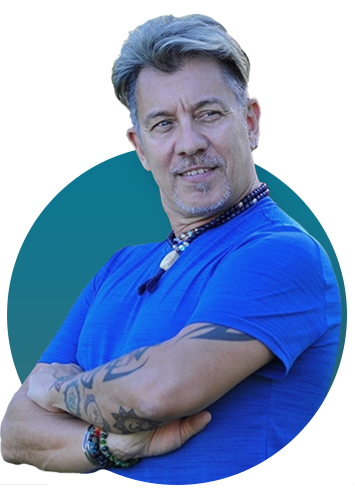September is National Yoga Month, a time to celebrate the power of yoga to bring balance, peace, and healing into our lives. It’s also a time to deepen our practice by exploring the “why” behind the movements and traditions we often take for granted. One of those small yet significant traditions is the way yoga teachers cue us to roll onto our right side after savasana. Have you ever wondered why? I did too!
When I think about why I’ve always cued students to roll to the right after savasana — that sacred final relaxation pose — my reasoning was rooted in symbolism. For me, the right side represented the East, where the sun rises each morning. Rolling right felt like an invitation to step into a new day, a new beginning. At the close of practice, my hope is to prepare yogis for renewal, carrying the peace of their practice into the rest of their day.
However, after teaching yoga for more than 14 years, I decided to dive deeper into the wisdom behind this cue. Here’s what I discovered:
Physiological Reasons
From a physical perspective, rolling to the right supports the body’s natural rhythms. Since the heart is positioned slightly to the left side of the chest, rolling to the right keeps it elevated, which helps reduce strain and allows blood pressure to regulate more smoothly after deep relaxation. This position also keeps the stomach above the esophagus, which aids digestion and can feel more comfortable. Plus, it minimizes dizziness when transitioning from lying down to sitting up.
Spiritual and Energetic Reasons
On a spiritual level, the right side is considered auspicious in many Indian traditions, symbolizing vitality, luck, and positive energy. Rolling to the right is sometimes seen as aligning with that positive energy, creating an intentional, graceful transition out of savasana.
It can also serve as a gesture of respect. In traditional settings, the teacher often sits to the student’s right, so rolling in that direction honors the guidance and wisdom of the teacher. Symbolically, the curled fetal position we take when rolling right represents surrender, humility, and the start of something new.
Practical Perspective
From a purely practical standpoint, guiding an entire class to roll to the right keeps students organized and avoids those unintentional “mat bumps” with neighbors. It creates harmony and flow, even in a packed room.
When Rolling Left is the Right Choice
Of course, rolling left may be better in certain circumstances. Pregnant students often find more comfort and improved circulation by rolling to the left, which reduces pressure on major blood vessels. Similarly, students with specific heart conditions, digestive issues, or sinus pressure after inversions may also benefit from rolling left instead.
Honoring Your Body
At the end of class, many teachers cue transitions like:
“Start to wiggle your fingers and toes. On your inhale, reach your arms overhead. Bend your knees, hug them into your chest, and roll onto your right side into a fetal position.”
This ritual honors your heart, your breath, and your body. Yet the truth is—whether you roll right or left, the most important thing is to listen to your body. Every choice you make on the mat is about honoring yourself with compassion.
Final Thoughts
Rolling to the right at the close of savasana blends tradition, physiology, and spiritual symbolism, offering a mindful way to return to the world with intention. Yet, as yoga teaches us, there is never just one “right” way—only the path that best supports you in the moment.
As we celebrate National Yoga Month, take this opportunity to bring more awareness into even the smallest transitions of your practice. Notice what feels natural, embrace the meaning behind the movement, and let each choice become part of your personal yoga journey.
🌿 Ready to deepen your practice or share yoga with others? Explore the Yoga Teacher Training programs at SWIHA and discover how you can turn your passion into a path of service, healing, and transformation. Your mat is the starting point; however, your journey can ripple far beyond it.


